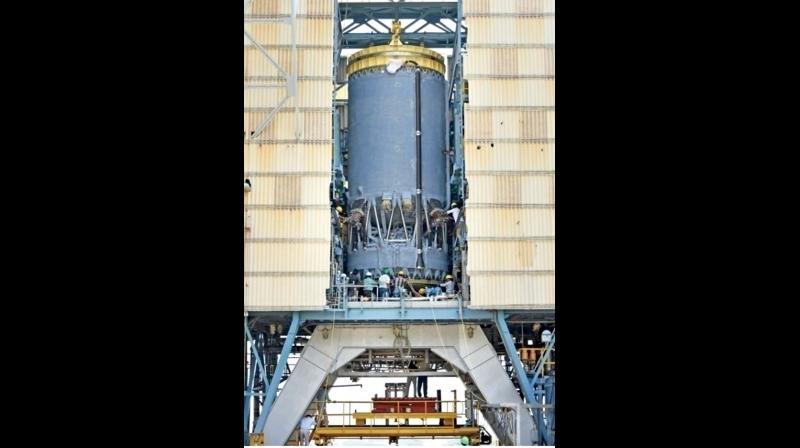Boost for Isro's indigenous Cryogenic technology
Isro's most powerful cryogenic stage passes first test.

CHENNAI: In a major boost to indigenous cryogenic technology, Isro’s most powerful Cryogenic Upper Stage for GSLV-Mk-III rocket was successfully tested on Wednesday. The cryogenic stage, designated as C25, was tested for a duration of 50 seconds at Isro Propulsion Complex (IPRC) in Mahendragiri in Tirunelveli district. This is the first test in a series of two tests. The next test is planned for flight duration of 640 seconds.
“The performance of the stage during the test was as predicted. The successful test of the stage in the first attempt itself demonstrates Isro’s capability,” K. Sivan, director, Vikram Sarabhai Space Centre (VSSC), Thiruvananthapuram. “This particular cryogenic stage is 100% indigenous. It is our own design and configuration. Though we realised the first indigenous cryogenic upper stage, the design is not ours,” he said.
During the flight, the propellant will be drawn from the stage to engine. This is tested in the first test. “It is very, very close to flight condition and that is why it is very significant. This indicates that we will be able to do the flight test successfully,” Sivan said. The C25 stage was conceptualised, designed and realised by Liquid Propulsion Systems Centre (LPSC), Isro’s lead Centre for Propulsion, with support from Vikram Sarabhai Space Centre and Sathish Dhawan Space Centre. The fabrication of various sub-systems of the engine and the stage was carried out through Indian Industries.
The C25 stage is the most powerful upper stage developed by ISRO and uses Liquid Oxygen (LOX) and Liquid Hydrogen (LH2) propellant combination. The stage carries 27.8 tonnes of propellants loaded in two independent tanks. The cryogenic stage has unique design challenges, with liquid hydrogen stored at -253 deg C and liquid oxygen stored at -195 deg C in its tanks. To store these cryogenic fluids, special multi-layer insulation is provided for the tanks and other structures. The flight engine has been successfully tested in the High Altitude Test (HAT) facility and integrated with the flight stage.
